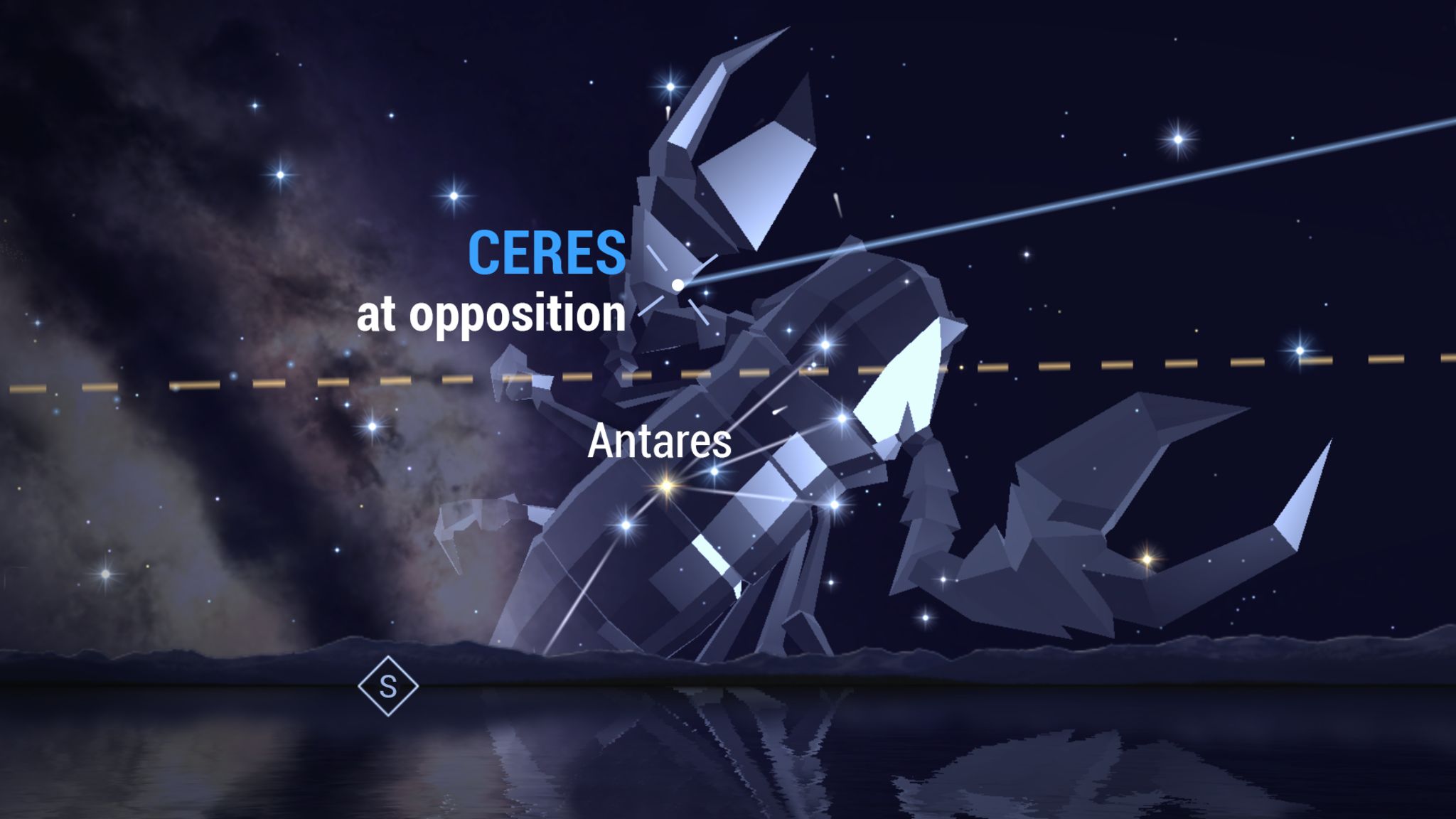Ceres Reaches Opposition
On Tuesday, May 28, the dwarf planet (formerly asteroid) Ceres will reach opposition, its closest approach to Earth for the year.
On the nights around opposition, Ceres will shine with a peak visual magnitude of 7.1, well within reach of binoculars and backyard telescopes. As a bonus, Ceres will be situated only 1 finger’s width to the upper right (or northwest) of the modestly bright star named Xi Ophiuchi. Both objects will easily fit within the field of view of a backyard telescope, although your telescope will mirror and/or invert the binoculars view.
To get you into the right patch of sky, Ceres will be located less than a fist’s diameter above the very bright, orange star Antares in Scorpius (the Scorpion). Ceres will reach its highest elevation, and peak visibility, over the southern horizon a little after midnight local time.
After a determined search by many astronomers who were looking for a theorized missing planet, Ceres was the first asteroid ever discovered, by Giuseppe Piazzi in Palermo, Sicily, on January 1, 1801. It was named after the Roman Goddess of Agriculture. (The same name gave us the word “cereal”!) Ceres was originally given planet status, orbiting as it does between Mars and Jupiter. But calculations of its 950 km diameter, and later discoveries of countless additional bodies in the asteroid belt, led to its demotion to queen of the asteroid belt. But in 2006, the same rules that demoted Pluto to dwarf planet status promoted Ceres up to the same class of objects.
Clear skies and happy hunting!
